The first step to growing your own fruit is, of course, planting a fruit tree. But what is the best way to do that? Is there a perfect time to plant? And how do you care for a newly planted fruit tree? Learn how to avoid the most common tree-planting mistakes, and get ready to enjoy years of delicious fruit harvests.
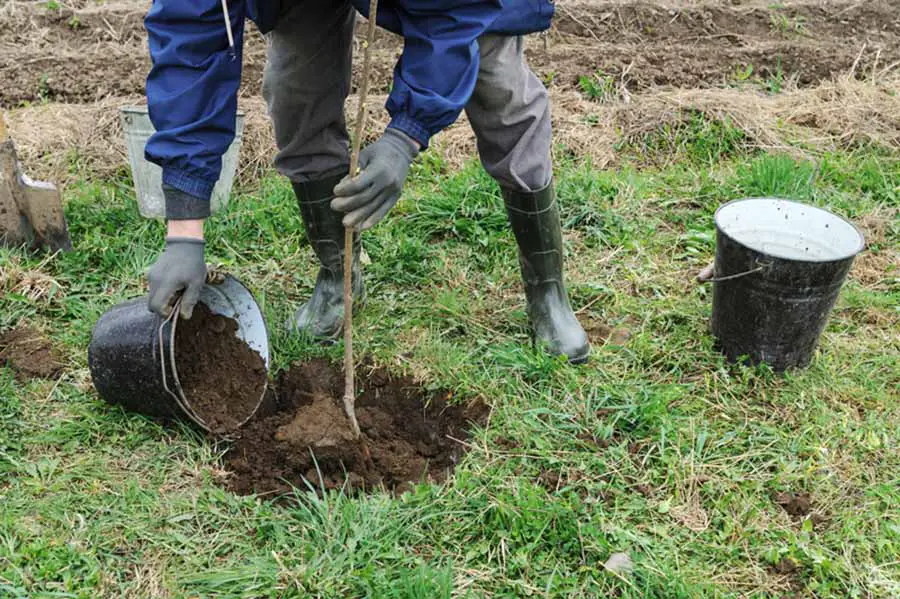
We may receive commissions from purchases made through links in this post, at no additional cost to you.
It sounds straightforward, “plant a tree,” but there are a lot of ways to accidentally make a misstep with this simple task. Planting a fruit tree the right way will set it up for years – perhaps even decades – of delicious fruiting success.
The tips I’ve listed below are based on good general gardening practices, but also on my own hard-won experience. I have inadvertently made many of the errors on this list over the years! But, as we all know, trial and error is the best way to learn and grow.
Consider the list of planting tips below as you go about planning and planting your own Fruit Grove, including how-tos for planting bare-root trees, container trees, and basic care instructions for newly planted trees.
Fruit Tree Planting Tips
It’s essential to consider the information below before digging a planting hole. A misstep in any of these categories could lead to a fruitless fruit tree, or at worst, tree death. Use this list to set the fruit tree up for growing success before you even get your hands dirty.
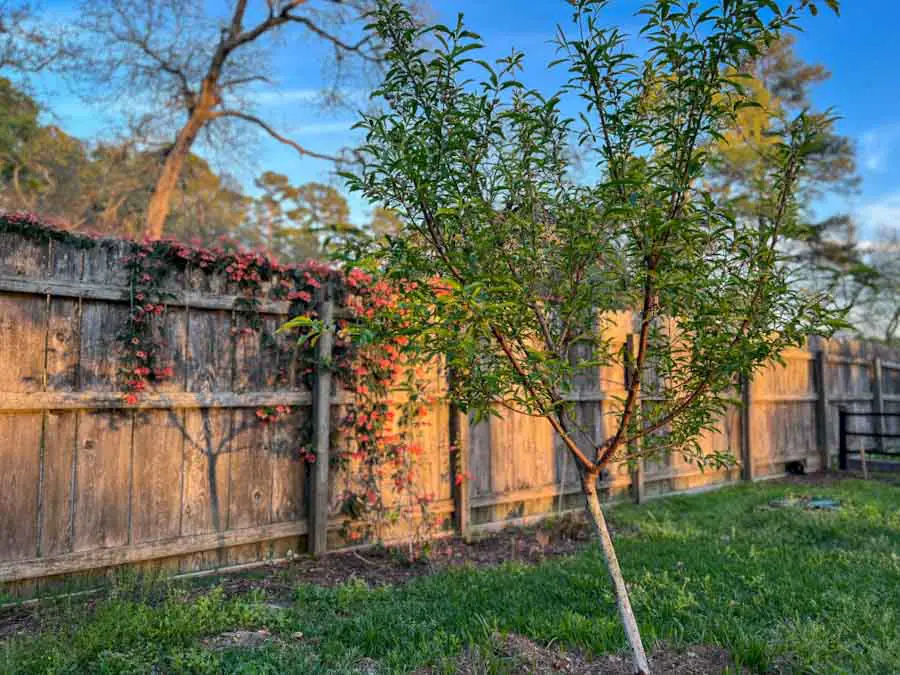
1. Choose the Right Tree
Do the growing needs of the tree correspond to your climate and growing zone? The recommended zonal range takes into account the cold hardiness of the tree, but that’s only part of the story. Certain trees may struggle in hot, humid weather, while others need heat to grow the best-tasting fruit.

Curious about any garden-related terms? Click on a highlighted word in the text, or visit The Fruit Grove Glossary to find out more.
Double check the tree’s required chilling hours. Almost every type of fruit tree needs a certain amount of time spent between 32° and 45°F over the winter in order to develop fruit. Choose fruit trees that correspond to the average number of chill hours in your area (find this online by searching for “[your state/region] chill hours”).
Only purchase fruit trees from a reputable source. I have lost fruit trees in the past that were potted up incorrectly by the nursery, or were so potbound that they struggled to thrive. I buy a lot of my fruiting plants from Nature Hills Nursery and have been really pleased with the quality, selection, and prices. Check your local (non big-box) nurseries, too – they will typically only stock plants that will grow well in your area.
2. Consider Pollination
Is your fruit tree self-pollinating, or does it need to be cross pollinated by another variety? Many fruit trees (like most citrus) can be pollinated from flowers on the same tree. Others (such as peaches, apples, apricots, persimmons, and many more) could be either self-fertile or self-infertile, depending on the specific variety.
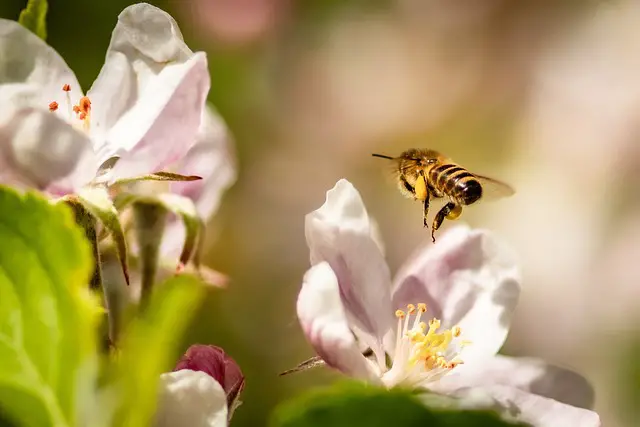
Do some research to determine whether you need to plant one or two trees. Even self-pollinating trees, such as my ‘Santa Rosa’ plum, will provide a much bigger and better fruit harvest if there is a pollinizer nearby.
If you plant two trees to pollinate each other, be sure that they bloom simultaneously. The only way two trees can pollinate each other is if the blooms are open at the same time. Also plant wildflowers, herbs, and flowering perennials to attract pollinating insects to the area.
3. Plant at the Right Time
In cold climates, it’s best to plant fruit trees in the early spring. Wait for the ground to thaw enough for digging. Planting early in the growing season will give new trees plenty of time to grow a healthy root system before going dormant for the winter.
For hot climates, plant fruit trees in the fall for the best chance at success. If planted in spring, newly planted trees may not be established enough by the time the summer temperatures hit (I know from experience). Wait until the heat of summer has passed, then plant in mid-fall at least 6 weeks before the first frost. The plant’s roots will establish over the fall and winter and will be ready to withstand the next summer’s hot temperatures.
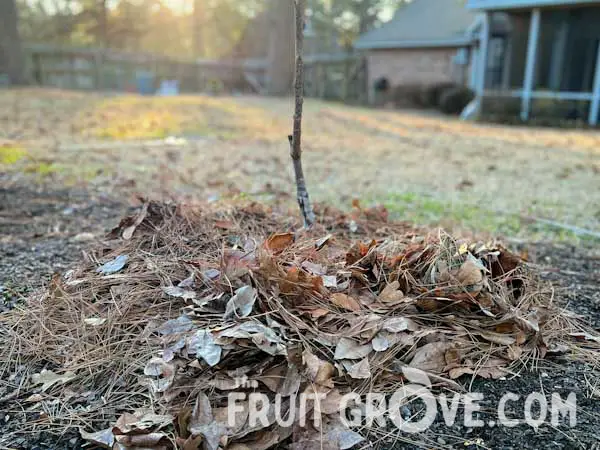
You can plant fruit trees out of season, but take special care to protect the trees during extreme summer or winter weather the first year. In hot climates, water frequently over the summer and consider partially shading the tree until it cools off. In cold climates, mulch heavily to insulate the roots, and/or cover young trees to protect from winter damage.
4. Choose the Perfect Location
Most fruit trees need at least 6-8 hours of direct sunlight to grow and fruit. Choose a spot that guarantees the tree will get the light it craves. More sunlight generally equates to better, more flavorful fruit. One caveat – in hot climates, where the sun is more intense, consider a location with some light afternoon shade to prevent scorching in extreme temperatures (this has saved several of my fruit trees from damage).
Choose a location that will accomodate the mature size of the tree when it is fully grown. Leave enough space for the tree to grow for the next 10+ years. Crowding will only cause issues, such as decreased airflow and light penetration. Also keep an eye out for any overhanging structures or underground obstructions that could interfere with growth.
Clear away weeds or other plants from the area immediate around the tree. Weeds can be aggressive, selfish neighbors. Root competition, especially for young fruit trees, can keep the tree from being able to uptake adequate water and nutrients. Weeds will also harbor disease pathogens or insects that may infect the tree.
5. Prepare the Soil
Before planting any fruit tree, check that the soil has good drainage. Poor soil drainage (soil that stays waterlogged for a long time after a rain) is one of the most common reasons for early tree death. Some fruit trees can tolerate wetter conditions than others, but most need well-draining soil for optimum health and fruiting.
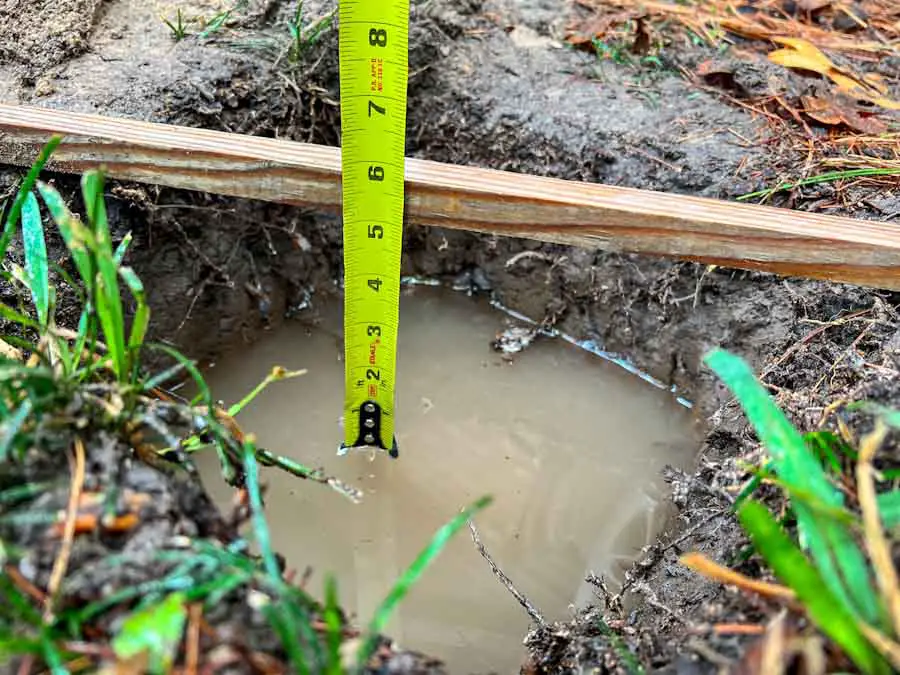
Learn more about how to check your soil drainage, fixing drainage issues, as well as a list of fruit plants that can tolerate slower drainage here: Soil Drainage for Fruit Trees: Everything You Need to Know.
Check your soil’s pH level to see which fruit trees will grow well in that spot. Soil pH is a measure of the acidity or alkalinity of the soil, and it determines which nutrients become bioavailable to plant roots. Most fruit trees will grow in slightly acidic to neutral soil with a pH between 5.5 and 7.0.
To learn more about soil pH and how to raise or lower soil acidity for different fruiting plants, check out this post: Soil pH for Fruit Trees: Why It Matters and How to Adjust It.
In general, it’s best to plant fruit trees in non-amended native soil. The tree must adjust to the native soil as its roots spread over the years, so it’s best for a young tree to adapt right away. As long as your soil is reasonably fertile and well-drained, there’s no need to add anything to the planting hole.
However, if your soil is extremely sandy and fast-draining, or if it is heavy clay and tends to become waterlogged, some amending may be necessary. As a rule of thumb, add no more than 25 percent organic amendments (compost, peat moss, coco coir, pine bark, etc) to the planting hole. The amendments will help the soil hold onto moisture and nutrients while allowing water to drain freely, but enough native soil is present for the tree to adapt to its new environment.
6. Plant at the Right Depth
Plant fruit trees at a depth where there is visible root flare at the base of the trunk, and the roots sit just below or level with the soil surface. It is crucial not to plant too deeply. If the root ball is buried even a couple of inches too low, the tree will struggle to grow and fruit, and it will eventually become stunted and die.
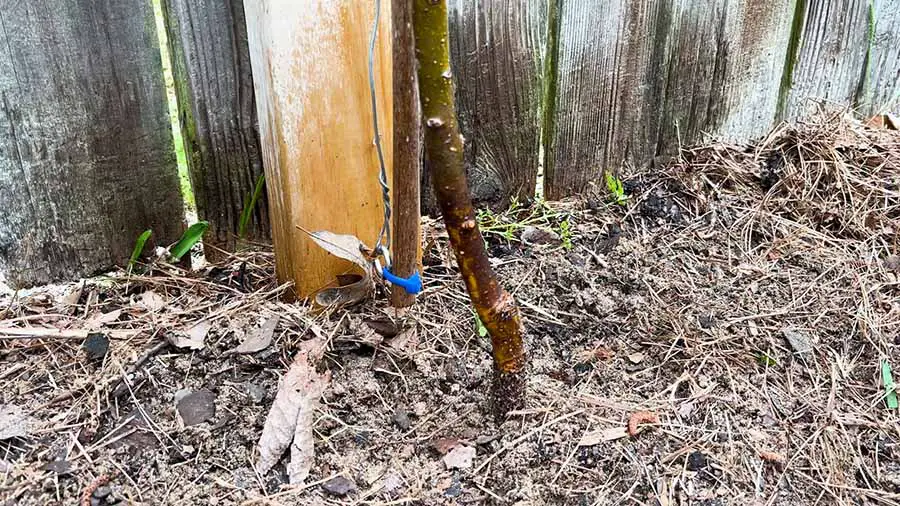
Check that the graft union is a few inches above the soil surface. Burying the graft union will cause the tree to send up growth from the rootstock plant (the bottom plant), which will be different from the desired variety (the scion, or top plant).
In general, plant fruit trees at the same depth as they were in the nursery pot. However, beware – some nurseries will plant their saplings too deeply in the nursery pots. This happened to me recently, and as a result I inadvertently planted an apple tree about 6 inches too deep. Luckily I caught the mistake in time and was able to raise the tree to the proper depth. Lesson learned!
7. Protect the Young Trunk
Protect the bark on young fruit trees from being damaged by weather or animals. The bark on young trees is thin and tender, so it is easily damaged by gnawing critters, fluctuating temperatures, or wayward string trimmers. Once the bark is damaged, pests and diseases will find their way into the soft tissue and cause all sorts of problems.
Use a tree wrap, latex tree paint, or a wire cage to protect the trunk for a year or two after planting. Once the tree grows a bit, the bark toughens up and is better able to withstand environmental stress.
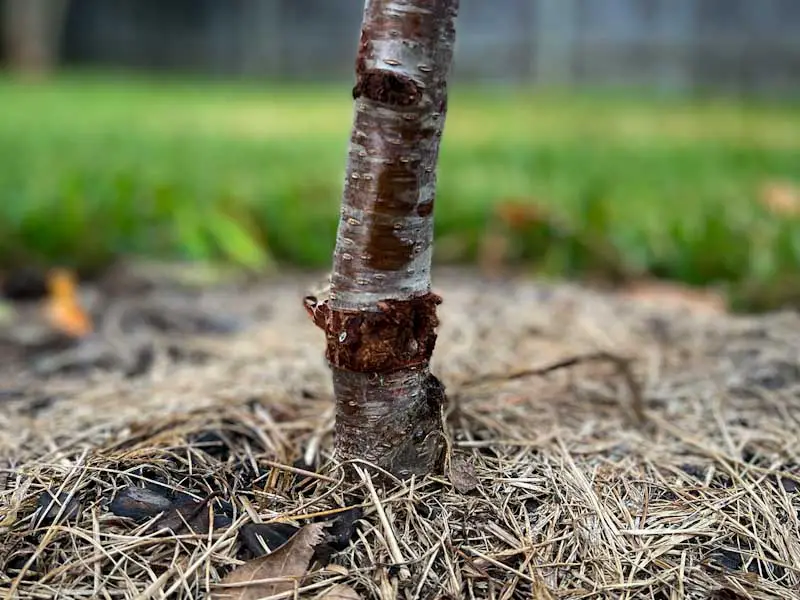
8. Stake the Tree if Needed
It’s best not to stake young fruit trees to allow the trunk to strengthen as it grows. However, if you plant the tree in an extremely windy location, tying it to a stake for the first 6 months to a year will keep it from breaking or blowing over.
I planted my peach trees perfectly straight, but the breeze through my backyard caused them to lean noticeably. However, now the trees are much larger and stronger, and the trunks are firmly in place (if slightly tilted). Trees know how to adapt to their environment, so it’s best to let them do their thing.
9. Keep Track of Everything
Write down the details of your newly planted tree on your phone, a notebook, or a garden journal. Keep track of the date, location, soil test results, and tree care. Record the specific variety, chill hours, and rootstock (if the plant tag specifies it). Gather all the info so you can reference it later when choosing other trees, or when you inevitably forget what type of plum you planted (speaking from experience).
How to Plant a Container-Grown Fruit Tree
- Step 1: Dig the planting hole about 3 times the width of the root ball. Place native soil on a tarp or wheelbarrow and mix in amendments as needed.
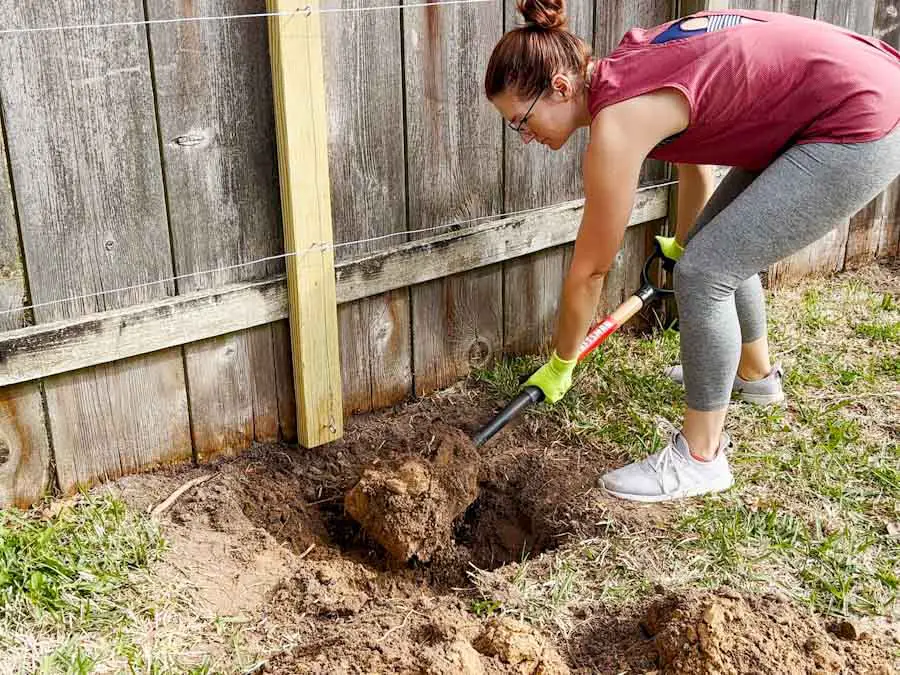
- Step 2: Remove the tree from its pot by tilting the pot on its side and easing the rootball out. Carefully use your fingers to loosen the bottom of the rootball.
- Step 3: Position the tree in the planting hole so the top of the root ball is just below (or at the same level) as the soil. The graft union should be 2-3 inches above the soil line.
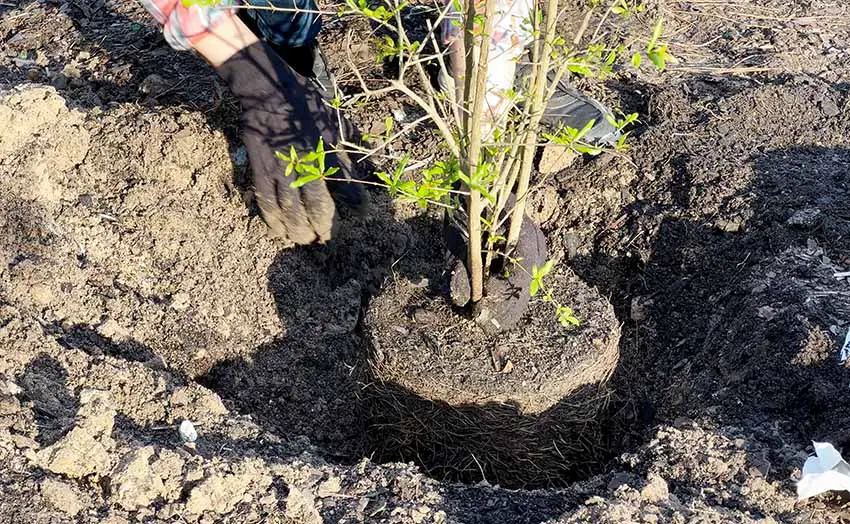
- Step 4: Backfill the planting hole with the native soil mixture about halfway, tamping down firmly with your foot as you go to remove any air pockets.
- Step 5: Water thoroughly once the hole is halfway filled. Then continue to backfill, tamping down the soil, and water thoroughly again once the hole is completely filled with soil. Build up a berm or a small ridge of soil encircling the tree about 1-2 feet away from the trunk. The berm acts as a basin to catch rainfall or irrigation water, ensuring the young tree is watered deeply.
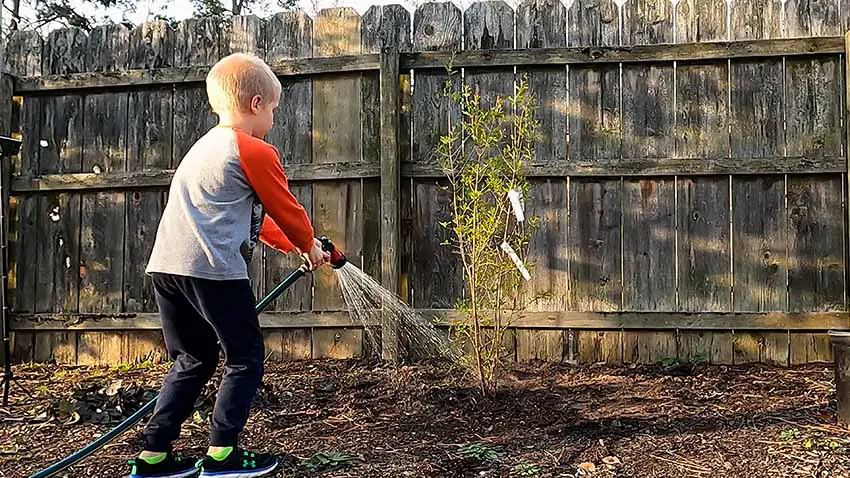
- Step 6: Mulch around the tree and stake (if necessary). Mulch with loose organic material, such as a combination of pine bark, shredded leaves, pine straw, or compost, leaving about 6 inches of space clear around the trunk.
How to Plant a Bare-Root Fruit Tree
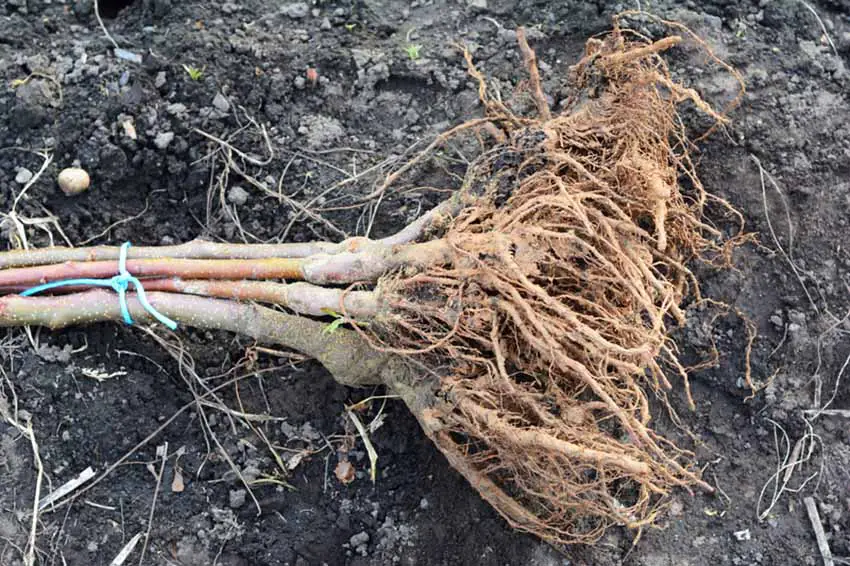
- Step 1: Soak the roots in water for 1-2 hours. Do not allow the roots to soak for longer than 24 hours.
- Step 2: Dig the planting hole and amend soil as desired. The planting hole should be 2-3 feet wide, or about twice as wide as the root ball. Add compost or other amendments to the native soil at no more than 25% of the total soil volume.
- Step 3: Position the tree so the graft union is 2-3 inches above the soil line. The topmost roots should be just below soil level. Spread out the roots in the hole.
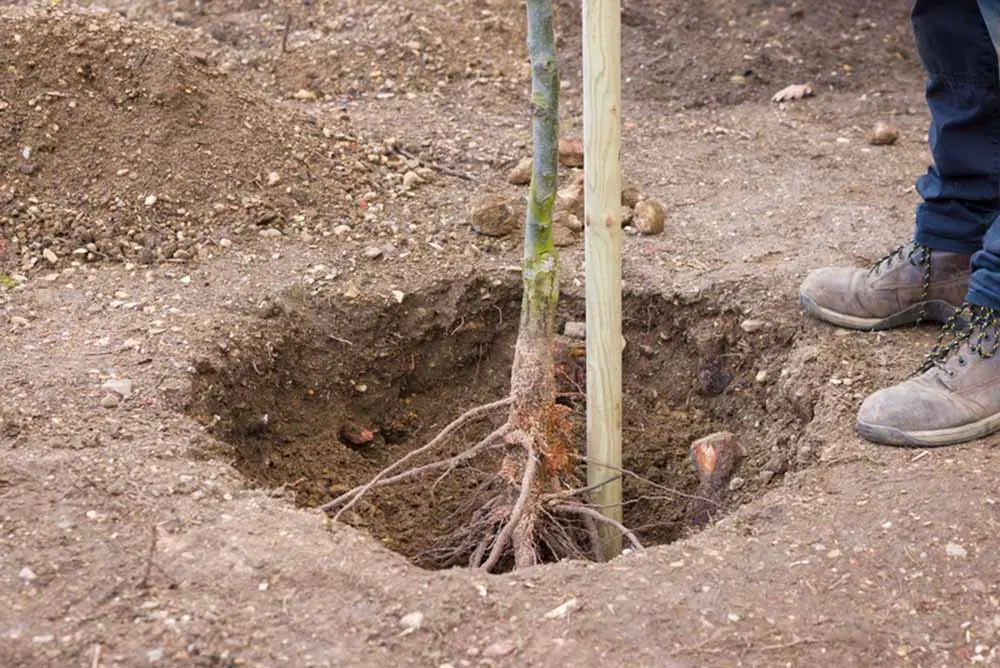
- Step 4: Backfill the hole with the soil mixture and tamp down firmly to remove air pockets. Be sure that the soil is firmly packed underneath the roots as well.
- Step 5: Water the tree thoroughly, first when the hole is about halfway filled, then again when the tree is fully planted. If desired, build a raised berm 1-2 feet around the trunk (a few inches of soil) to serve as a catch basin for rainwater.
- Step 6: Mulch around the tree and tie to a stake, if desired. Use 3-6 inches of organic mulch, leaving about 6 inches of space clear around the trunk.
Basic Care for Newly Planted Fruit Trees
Watering
Water daily for the first week or two, then water 1-2 times per week depending on rainfall and temperature (hotter weather=more frequent watering) for the next few months. It’s better to water deeply less frequently, rather than shallow sprinkles every day.
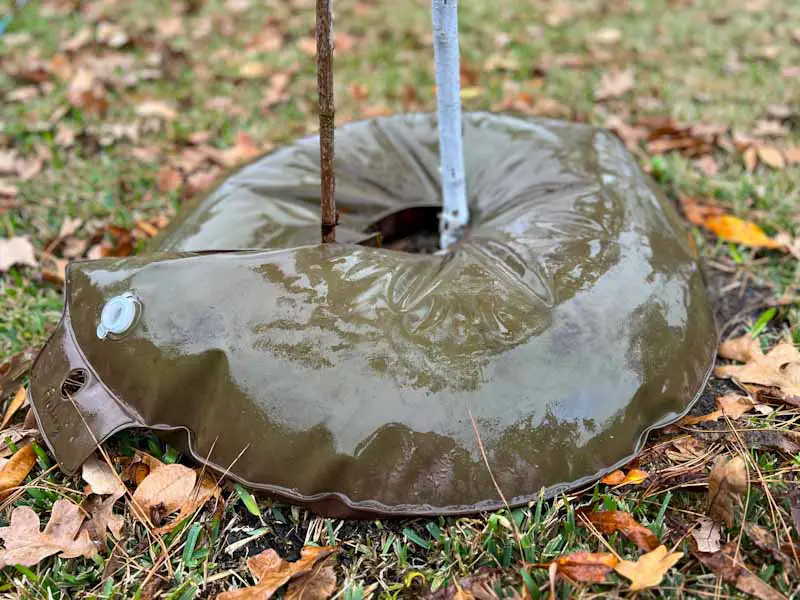
Use drip irrigation set on a timer, or use these watering bags for easy, deep watering. Otherwise, turn on a garden hose to a trickle, and place it near the tree’s waterline. Water the tree for at least 30 minutes, changing the location of the hose once or twice.
Fertilizing
Skip the fertilizer when planting a fruit tree. Transplanted roots are more susceptible to stress, and a young root system is easily burned by too much fertilizer. If possible, avoid fertilizing during the tree’s first growing season. This allows you to asses whether or not the tree even needs fertilizer (tree roots are great at seeking out nutrients in the surrounding soil).
Research the tree’s specific fertilizing needs, which vary greatly depending on the variety, age, and soil type. Check out these fertilizing resources on The Fruit Grove:
- When to Fertilize Fig Trees: A Complete Guide
- Fertilizing Potted Lemon Trees: Everything You NEED to Know
- Blackberry Fertilizing: What to Use to Grow the Best Berries
Pruning
I recommend waiting to prune a newly planted fruit tree until after its first growing season. Most fruit trees come pre-pruned when you buy them from a reputable nursery. However, if your young tree seems too large in proportion to its root ball, it’s ok to prune at planting time.
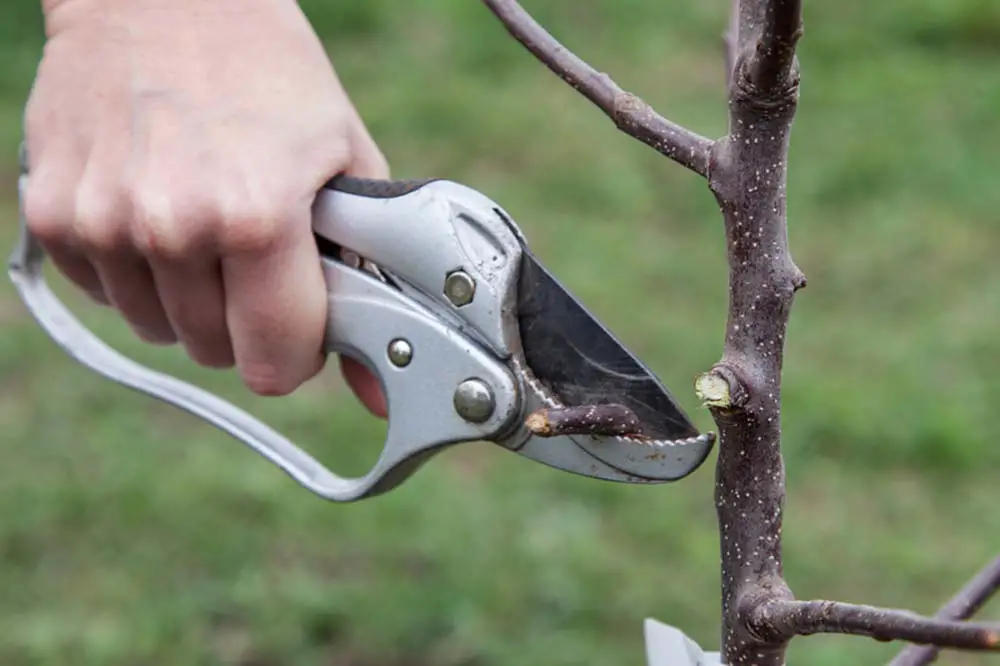
There are a lot of ways to prune fruit trees, and they differ from fruit to fruit. In general, you shorten the central trunk (leader) down to 3-4 feet and keep 3-5 strong scaffold branches evenly spaced around the tree.
Mulching
Keep a fairly thick layer of mulch (3-6 inches) around the tree throughout its first year (and beyond). Mulch accomplishes several things – it insulates the soil and roots from extreme temperatures, keeps moisture from evaporating too quickly, and breaks down over time, enriching the soil.
Just be sure to leave several inches of space between the trunk and the mulch pile. Piling up mulch around the trunk causes the same problems as planting too deeply.

